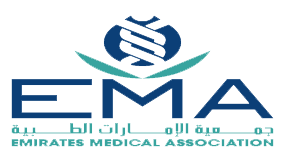Are Breast Lift Scars Visible?
Breast lift surgery, also known as mastopexy, is a popular cosmetic procedure for raising and reshaping sagging breasts. One common concern among potential patients is the visibility of scars after surgery. This article delves into the various aspects of breast lift scars, their visibility, and how to manage them effectively.
Immediate Post-Surgery Visibility
Immediately after surgery, breast lift scars are quite visible. They appear red, swollen and raised due to the body’s natural healing process. This initial phase can be alarming, but it’s important to remember that this is a normal part of recovery.
- Redness and Swelling: The surgical area will be red and swollen.
- Raised Scars: Scars may appear raised and more prominent initially.
- Healing Process: This phase typically lasts for a few weeks.
Long-Term Scar Appearance
Over time, the appearance of breast lift scars changes significantly. They gradually fade and become less noticeable, blending more with the surrounding skin.
- Fading: Scars will fade from red to a lighter color.
- Flattening: Raised scars will flatten out.
- Blending: Scars will blend with the natural skin tone over time.
Factors Affecting Scar Visibility
Several factors influence how visible breast lift scars will be in the long run. These include the patient’s skin type, age, and overall health, as well as the surgical technique used.
Book A Consultation With Dr Shehzadi Tasneem
Top-rated Plastic Surgeon For Breast Lift in Dubai
Installment Plan Available
- Skin Type: Darker skin tones may cause more noticeable scars to develop.
- Age: Younger patients tend to heal faster and with less scarring.
- Health: Overall health and lifestyle choices can impact scar healing.
Types of Breast Lift Incisions and Their Visibility
Periareolar Incision
The periareolar incision is made around the edge of the areola. This type of incision is often less noticeable because it blends with the natural color transition between the areola and the surrounding skin.
- Location: Around the areola.
- Visibility: Less noticeable due to color transition.
- Suitability: Ideal for minor lifts.
Vertical Incision
A vertical incision runs from the bottom of the areola to the breast crease. This type of incision is more visible but allows for more significant reshaping.
- Location: From the areola to the breast crease.
- Visibility: More noticeable but effective for reshaping.
- Suitability: Suitable for moderate lifts.
Inverted-T or Anchor Incision
The inverted-T or anchor incision combines the periareolar and vertical incisions with an additional horizontal incision along the breast crease. This method is the most visible but is necessary for extensive reshaping.
- Location: Around the areola, vertically down, and along the breast crease.
- Visibility: Most noticeable but allows for extensive reshaping.
- Suitability: Best for significant lifts.
Minimizing Breast Lift Scar Visibility
Proper Incision Placement Techniques
Surgeons use specific techniques to place incisions in less visible areas, such as along natural skin folds or the areola’s edge, to minimize scar visibility.
- Natural Folds: Placing incisions along natural skin folds.
- Areola Edge: Using the color transition of the areola.
- Expertise: Choosing an experienced surgeon for optimal results.
Post-Operative Care for Optimal Healing
Proper post-operative care is crucial for minimizing scar visibility. This includes following the surgeon’s instructions, keeping the area clean, and avoiding strenuous activities.
- Follow Instructions: Adhere to the surgeon’s guidelines.
- Cleanliness: Keep the surgical area clean.
- Activity: Avoid strenuous activities that may strain the area.
Scar Treatment Options
Various treatments, including topical treatments, silicone sheets, and non-invasive procedures like laser therapy, can help reduce the visibility of scars.
- Topical Treatments: Use of creams and ointments.
- Silicone Sheets: Silicone sheets are applied to flatten scars.
- Non-Invasive Procedures: Options like laser therapy and microneedling.
Timeline of Breast Lift Scar Healing
Initial Healing Phase (0-6 Weeks)
During the initial healing phase, the body works to close the incisions and start the healing process. This phase involves significant changes in the appearance of the scars.
- Closure: Incisions begin to close.
- Redness: Scars appear red and swollen.
- Care: Follow post-operative care instructions closely.
Scar Maturation Phase (6 Weeks – 1 Year)
In the scar maturation phase, scars start to fade and flatten. This phase is crucial for their long-term appearance.
- Fading: Scars begin to lighten.
- Flattening: Raised scars start to flatten.
- Consistency: Maintain consistent scar care.
Long-Term Scar Appearance (1 Year and Beyond)
After a year, the scars reach their final appearance. They are usually much less noticeable and blend well with the surrounding skin.
- Final Appearance: Scars reach their final look.
- Blending: Scars blend with the skin tone.
- Maintenance: Continue with any recommended scar treatments.
Factors Influencing Breast Lift Scar Visibility
Skin Type and Genetics
Skin type and genetics play a significant role in how scars heal and eventually become visible. Some people are genetically predisposed to develop more noticeable scars.
- Genetic Predisposition: Some people are more prone to scarring.
- Skin Type: Darker skin tones may cause more prominent scars to develop.
- Healing Response: Individual healing responses vary.
Age and Overall Health
Age and overall health significantly impact the healing process. Younger patients and those in good health typically experience better healing and less noticeable scars.
- Age: Younger patients heal faster.
- Health: Good overall health promotes better healing.
- Lifestyle: Healthy lifestyle choices aid in scar healing.
Surgical Technique and Surgeon Expertise
The surgical technique and the surgeon’s expertise are critical in determining scar visibility. Experienced surgeons use advanced techniques to minimize scarring.
- Technique: Advanced surgical techniques reduce scarring.
- Expertise: Experienced surgeons achieve better results.
- Precision: Precise incisions lead to less noticeable scars.
How Long Do Breast Lift Scars Take to Fade?
Average Timeline for Scar Fading
On average, breast lift scars take about six months to a year to fade significantly. The initial redness and swelling subside within the first few weeks, but complete fading takes longer.
Factors Affecting Scar Fading Speed
Several factors can influence how quickly scars fade, including skin type, age, overall health, and adherence to post-operative care instructions.
Scar Management Techniques for Breast Lift Patients
Topical Treatments and Silicone Sheets
Topical treatments and silicone sheets are effective in reducing scar visibility. These treatments help to flatten and lighten scars over time.
- Creams and Ointments: Use of scar-reducing creams.
- Silicone Sheets: Silicone sheets are applied for flattening.
- Consistency: Regular use for best results.
Massage and Compression Therapy
Massage and compression therapy can also aid in scar healing. These techniques help to break down scar tissue and promote better healing.
- Massage: Regular massage to break down scar tissue.
- Compression: Use of compression garments.
- Frequency: Consistent application for effectiveness.
Non-Invasive Treatments (Laser, Microneedling)
Noninvasive treatments like laser therapy and micro-needling can significantly reduce scar visibility. These treatments are often used in conjunction with other scar management techniques.
- Laser Therapy: Use of lasers to reduce scar appearance.
- Microneedling: Promotes collagen production for better healing.
- Combination: Often used with other treatments for best results.
Can Breast Lift Scars Be Hidden Under Clothing?
Scar Placement and Clothing Considerations
Breast lift scars are typically placed in areas that can be easily hidden under clothing. Surgeons aim to make incisions in less visible areas to ensure that scars are not easily noticeable.
Lingerie and Swimwear Options
Choosing the right lingerie and swimwear can help conceal breastlift scars. Many options are designed to effectively cover common scar areas.
Comparing Breast Lift Scar Visibility to Other Cosmetic Procedures
Breast Augmentation Scars
Breast augmentation scars are usually smaller and less noticeable compared to breast lift scars. They are often hidden in the breast crease or around the areola.
Tummy Tuck Scars
Tummy tuck scars are typically more extensive and more visible than breast lift scars. They usually run horizontally across the lower abdomen.
Breast Reduction Scars
Breast reduction scars are similar to breast lift scars in terms of visibility. Both procedures often use similar incision techniques.
Are There Scarless Breast Lift Options?
Limitations of Non-Surgical Alternatives
Non-surgical alternatives to breast lifts, such as thread lifts or laser treatments, have limitations. They may not provide the same level of lift and reshaping as surgical options.
Minimally Invasive Techniques
Minimally invasive techniques, such as endoscopic lifts, can reduce scarring but are not entirely scarless. These techniques still involve small incisions.
Psychological Impact of Breast Lift Scars
Body Image and Self-Esteem
Breast lift scars can impact body image and self-esteem. However, many patients find that the improved breast shape outweighs the concern about scars.
Coping Strategies for Scar Anxiety
Coping strategies, such as counseling and support groups, can help patients manage anxiety related to scars. These strategies provide emotional support and practical advice. Breast lifts satisfaction is high among women who get the surgery Many patients feel more confident and happy with their appearance after Pricey aesthetic enhancement can make people look better but costs a lot of money Some examples are fancy makeup expensive clothes and cosmetic surgeries
Vampire lift longevity helps people look younger for a longer time It uses your own blood to make your skin healthier and fresher
Statistics
- According to the American Society of Plastic Surgeons, breast lifts have increased by 70% since 2000, indicating growing acceptance despite potential scarring. (Source: American Society of Plastic Surgeons )
- A study published in the Aesthetic Surgery Journal found that 89% of patients were satisfied with their breast lift results, including scar appearance, one year post-surgery. (Source: Aesthetic Surgery Journal )
- The National Institutes of Health reports that proper scar management can reduce the visibility of surgical scars by up to 50% within the first year. (Source: National Institutes of Health )9/)
FAQ’s
1. Where are breast lift scars typically located?
Breast lift scars are usually located around the areola, vertically down the center of the breast, or in an anchor shape, depending on the technique used. The location can affect how visible the scars are in various clothing styles.
2. How noticeable are breast lift scars after surgery?
Immediately after surgery, scars may appear red and raised, but they generally fade over time. Most patients find that scars become less noticeable within a few months, especially with proper care.
3. Can breast lift scars be hidden under clothing?
Yes, most breast lift scars can be easily hidden under bras and clothing, particularly with strategic placement by the surgeon. Many women find that scars are not visible in most everyday attire.
4. How long does it take for breast lift scars to fade?
The fading process can take several months to a year. Factors such as skin type, healing process, and post-operative care can influence how quickly scars diminish in appearance.
5. Are there treatments available to reduce the visibility of breast lift scars?
Yes, treatments such as silicone gel sheets, laser therapy, or chemical peels can help improve the appearance of scars. Consulting with a dermatologist or plastic surgeon can provide options tailored to individual needs.












